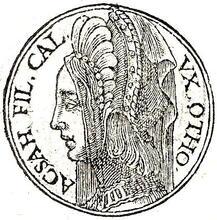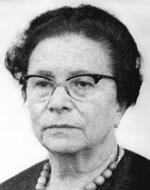Susanna: Apocrypha
Susanna’s story comes from Greek manuscripts of the Book of Daniel and is included in the Christian but not Jewish canon. It was written during the Hellenistic period, after Alexander the Great’s conquests. The story depicts a woman named Susanna, a wealthy Babylonian Jewish woman. Two judges conspire to entrap her, threatening to accuse of adultery if she refuses to have sex with them, but due to her strong faith, she refuses their advances and they take her to the court and accuse her. She calls out to God, and God replies to her plea, sending a man named Daniel to reveal the judges as false witnesses and save Susanna from her death sentence.
Background and Introduction
The brief, self-contained story of Susanna appears in Greek but not Hebrew manuscripts of the Book of Daniel. Most modern editions of the Christian Bible include it among the Apocryphal/Deuterocanonical Books as Daniel 13. Although readers will respond to and remember most vividly Susanna and her predicament, the story’s conclusion emphasizes Daniel’s emergence as a young figure of wisdom. On account of this, some ancient Greek versions place the Book of Susanna before Daniel 1.
The text first introduces Joakim, a wealthy man living in the Babylonian Lit. (Greek) "dispersion." The Jewish community, and its areas of residence, outside Erez Israel.diaspora. Joakim, however, plays a minimal role in the unfolding of the story. Susanna’s introduction defines her in terms of her relationships to two men, as wife of Joakim and daughter of Hilkiah, and tells that she is beautiful and righteous and was trained “according to the law of Moses” by her parents (vv. 2–3).
Joakim’s house functions as a courthouse for the Jewish community. Two elders who serve there as judges separately develop lustful feelings toward Susanna, whom they spy walking in the garden when the house empties at midday for the community to go to their own homes for lunch (vv. 8–12). One day the two elders catch each other lingering behind in order to watch Susanna, and they conspire together to entrap her (vv. 13–14).
On a hot day Susanna decides to bathe in the garden (v. 15). She believes herself to be alone with her maids because the elders have concealed themselves (v. 16). When Susanna sends her maids away to bring ointments for her bath (vv. 17–18), the elders reveal themselves and try to coerce her into sexual relations. They say that, unless she lies with them, they will testify that she sent her maids away in order to be with a young lover (vv. 19–21). Susanna’s dilemma is this: to submit to the elders is to disobey the law of Moses, which she has been raised to follow, but to resist the elders is to invite the death penalty for adultery (Lev 20:10; Deut 22:22). She articulates her decision, “I choose not to do it; I will fall into your hands, rather than sin in the sight of the Lord” (v. 23). Susanna cries aloud, and so do the elders (v. 24). Their shouting attracts members of the household (v. 26), specifically identified as “servants,” who, when they hear the elders’ story, are “very much ashamed, for nothing like this had ever been said about Susanna” (v. 27).
The Trial of Susanna
Susanna’s trial occurs on the following day at her home, described as “the house of her husband Joakim” (v. 28). Susanna comes before the two elders and the people, accompanied by her parents, her children, and other unspecified relatives—her husband is not mentioned (vv. 29–30). The lascivious elders ask that she be unveiled so that they may continue to look at her (v. 32). Those who weep with her weep at this disgrace (v. 33), which in Theodotion’s version amounts to an unveiling of Susanna’s face. (The NRSV follows Theodotion, an alternate Greek translation of the Hebrew Bible.) In the Septuagint version, Susanna is stripped naked, in accordance with ritual Jewish law (Ezek 16:37–30; Hos 2:3–10). The elders proceed with their accusations (v. 34). They claim that they saw Susanna in the garden, embracing a young lover whose strength enabled him to elude them as they attempted to detain him; they further claim that Susanna has refused to cooperate in naming the lover (vv. 36–41a). Because of the credibility of the elders in the community, the assembly believes them and condemns Susanna to death (v. 41b).
No one offers testimony on Susanna’s behalf. She, however, turns to heaven for help, crying aloud to God that she is innocent (vv. 42–43). The text records, “The Lord heard her cry” (v. 44). Just as Susanna is being taken to her death, God stirs “the holy spirit of a young lad named Daniel” (v. 45). Announcing that he cannot be part of Susanna’s execution (v. 46), he asks the assembly for the right to cross-examine the elders (vv. 47–49). Before the reassembled court, Daniel separates the two elders and questions each about the location of the lovers’ intimacies. The first elder identifies a mastic tree (v. 54) as the site of the illicit coupling, and the second elder identifies an evergreen oak (v. 58). Daniel thus reveals their deceit and the innocence of Susanna, “a daughter of Judah,” a descendant of southern Judah (v. 57). The two elders are then sentenced to the fate they intended for their victim: death (v. 62).
At the close of the tale, Susanna’s parents and husband rejoice, not because Susanna will live, but because she was “found innocent of a shameful deed” (v. 63). Susanna’s own reaction is not described. Instead, the text notes that “from that day onward Daniel had a great reputation among the people” (v. 64).
History of Susanna and Reception
Although the story has a Babylonian setting, it was written during the Hellenistic period (after the death of Alexander the Great in 323 BCE) and reflects the concerns of that time. One of Israel’s major concerns was how to maintain its integrity living in diaspora among alien peoples. Susanna’s community does not seem economically or politically vulnerable to external pressures; rather, it seems wealthy and secure. The wickedness of the elders in the garden suggests the potential for a community accustomed to luxury to self-destruct through laxity and inattentiveness to proper boundaries. As in other Hellenistic narratives, the principal female character represents the community under attack. In the Book of Judith, for example, Judith represents the community under siege, protecting its cultic boundaries from foreign penetration. In the Book of Susanna, Susanna represents the community besieged by internal problems.
Critics have persistently labeled Susanna a tale of seduction, although feminist critics have insisted that it is really a tale of attempted rape. To call the story a tale of seduction is to visualize the events through the eyes of the elders. In fact, the story is written in a way that emphasizes this point of view; the reader is invited to consider Susanna and her beauty, to see what the elders see. The reader is not invited to look at the elders—to see what Susanna sees. Susanna remains the object of the elders’ and the reader’s vision, rather than emerging as a subject whose vision defines her own story. Such a representation of Susanna may be difficult for women readers, who can align themselves with neither the gaze of the elders nor with Susanna’s unrepresented gaze. Susanna presents a further challenge to contemporary readers. On the one hand, Susanna’s resistance to rape and adherence to the Mosaic law is laudable. On the other hand, Susanna’s understanding of her dilemma unfortunately supports the problematic notion that victims are somehow themselves guilty. For these reasons Susanna is an ambiguous heroic figure for some contemporary feminists.
Glancy, Jennifer A. “The Accused: Susanna and Her Readers.” Journal for the Study of the Old Testament 58 (1993): 103–116.
Levine, Amy-Jill “‘Hemmed in on Every Side’: Jews and Women in the Book of Susanna.” In Reading from This Place, vol. 1: Social Location and Biblical Interpretation in the United States, edited by Fernando E. Segovia and Mary Ann Tolbert, 175–190. Minnesota: 1995.
Meyers, Carol, General Editor. Women in Scripture. New York: 2000.









